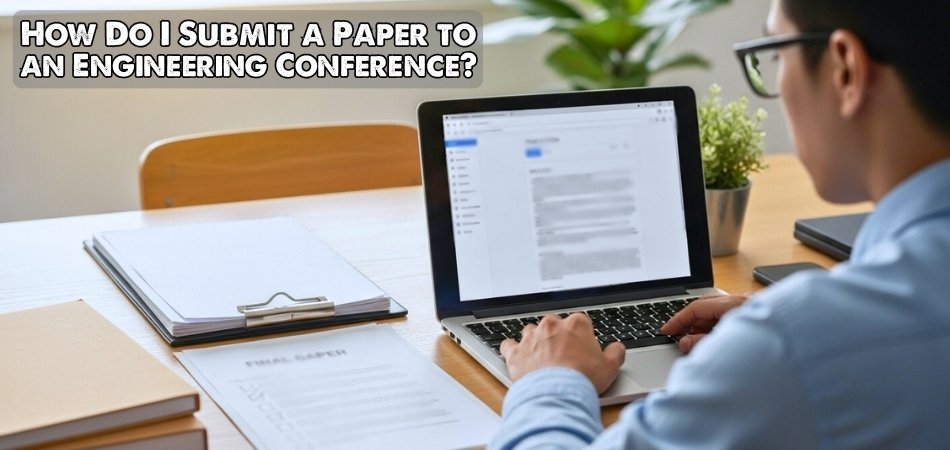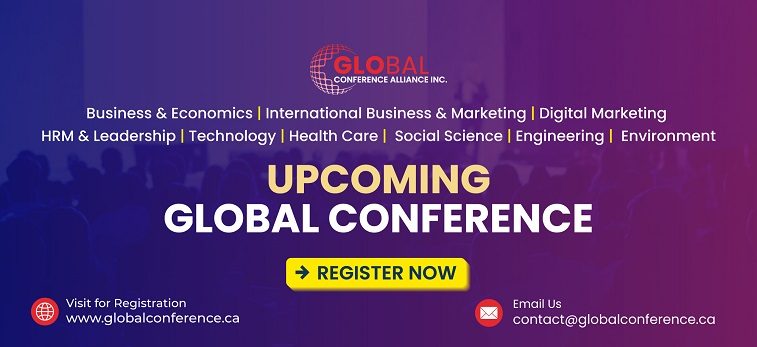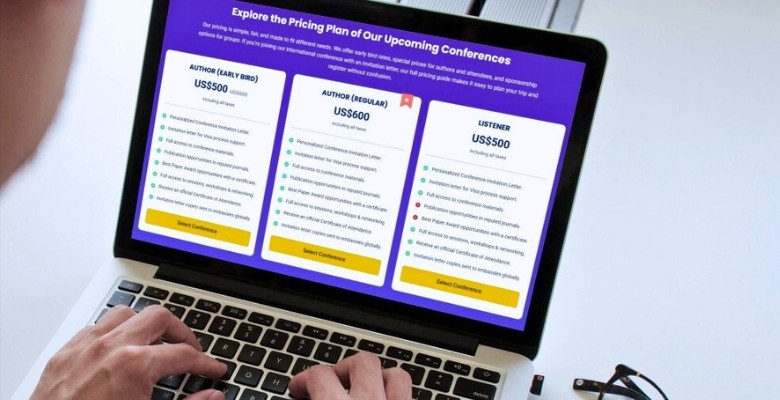Writing a paper for an engineering conference can be a big step for anyone interested in sharing their work. It’s a way to show your research and be part of something larger in your field. You might already be wondering, how do I submit a paper to an engineering conference?
Submit a paper to an engineering conference by first selecting a relevant event, then following its specific formatting and submission guidelines. If you need personal verification, use platforms like EasyChair or EDAS to upload your paper. Wait for peer review, revise as necessary, and submit the final version to the conference site. You’ll be asked to present the paper if it gets accepted.
If you’re curious and want to know more, you’re in the right place. This article covers everything you need to understand the full process, step by step. From choosing the right event to preparing for your final presentation, you’ll find all the important details here.
How Do I Submit a Paper to an Engineering Conference?
Getting your paper into an engineering conference might seem tricky at first, but once you know the steps, it becomes much easier. Whether your topic is electrical, mechanical, or something else, here’s how you can get started and move forward.
Find the Right Fit
Start by searching for conferences that focus on your subject, like mechanical, civil, or electrical engineering. Pick one that fits your research and has a good reputation. Some popular ones are backed by Global Conference Alliance Inc. If you’re preparing for international events like conferences in USA, Canada, or any other country, make sure the topic matches your work and check if they’re indexed or well-known in your field before submitting anything.
Read the Guidelines
Each conference has its own rules for how the paper should be written and formatted. These include things like the page limit, font size, and which template to use. Most conferences ask for specific styles like IEEE or ASME. So, download the official template and go through every instruction carefully to make sure your paper fits exactly what they’re asking for.
Write the Paper
Once you have the format, begin writing your paper. Start with a title and a short abstract (about 250 words). Then add the introduction, your method, the results, and your conclusion. Be sure to include charts or images if they help explain your work. If the conference asks for author details or a cover letter, add those too before you’re ready to submit.
Use the Right Portal
When your paper is prepared, submit it to a conference portal such as Ex Ordo, EDAS, or EasyChair. Create an account, then upload your paper. Fill in the title, keywords, authors, and abstracts. As the conference website has a lot of papers to review, latency may occur. If you’re in a hurry, you may consider the website’s fast peer review service.
Wait for Feedback
Once your paper is submitted, it goes through peer review. Reviewers read your work to see if it’s clear, original, and fits the theme of the conference. They may ask for some changes. That’s totally normal. Read the comments carefully, make the updates they suggest, and upload the revised version before the deadline they give you.
Final Paper Upload
If your paper is accepted, you’ll be asked to submit the final version. This one must be formatted exactly the way they want. Make sure all changes from the review are included, and double-check the formatting rules. This version will be the one that’s published in the official conference materials, so it has to be completely correct. The following is a sample of the form you’ll see when you upload your paper.
Get Ready to Present
After the final submission, it’s time to prepare for your presentation. Some conferences ask for slide decks, others prefer posters. They’ll give you a time limit too, so plan what you’re going to say and practice it. Be ready to answer questions and explain your work clearly to the people attending your session.
Presenting your paper at a conference is a great way to share your ideas with others. It also helps you learn from different people working in the same field. Just follow each step one at a time, and don’t rush. Once everything is done, you’ll feel proud of what you’ve achieved.
What Are the Requirements for Submitting a Paper to an Engineering Conference?
Sharing your ideas at an engineering conference is a great way to show your hard work and learn from others as well. But before you send in your paper, there are some important rules to follow. These rules help keep everything fair and organized for everyone. Read these simple tips below to make sure your paper gets accepted without any trouble!
- Make sure your paper is completely new and hasn’t been published or sent to any other place, like a journal or a different conference.
- Your name or any detail that can tell who you are should not be written on the paper. Reviewers won’t know who wrote it.
- Follow APA style when writing your paper, including the way you add references, headings, and how you format your content.
- Your paper should be between 4 and 10 pages long. This count includes everything like the title, figures, tables, and references.
- Always use Times New Roman font in size 10. This is the only font and size allowed for all parts of your paper.
- After writing your paper, send it using the Submission Form on the conference website. That’s the official way to submit it.
- Once your paper gets accepted, you must fill out the author registration form. This step confirms that you’re taking part in the event.
- If you don’t have a paper but still want to attend, you can register as a listener using the Listener Registration link.
- It can take up to 14 business days to get a reply about your paper, so be patient while the team reviews it carefully.
Before you submit, make sure you understand how to write an engineering conference paper that aligns with the technical and formatting standards of the target conference.
How the Double-Blind Peer Review Process Works for Engineering Conference Paper Submission?
When someone sends their paper to an engineering conference, there’s a full review process that checks if it’s good enough to be accepted. It happens in stages to make sure everything stays fair and clear. Keep reading to see how each step works.
Step 1: Paper Submission
Everything begins when the authors upload their paper to the conference website. This version of the paper doesn’t include their names or other personal info so that it stays anonymous. The paper includes the title, abstract, main content, and references. Once submitted, the conference system stores it safely and marks it ready for the first round of checks.
Step 2: Initial Screening
Before anything else, the conference team takes a quick look at the paper. They check if the topic fits the theme of the event and if the paper follows the given format rules. If a paper doesn’t match the rules or topic, it’s usually rejected here. But if everything looks okay, it moves on to the next stage for deeper review.
Step 3: Reviewer Assignment
After the paper passes the first check, it’s time to choose who will review it. The team picks experts in the same subject as the paper. These reviewers are not allowed to know who wrote the paper, and they must not have any close link with the authors. This way, the review stays fair and honest for everyone.
Step 4: Review Process
This is the main part. Reviewers read the paper and check if the work is new, well-done, and useful. They don’t know who wrote the paper, and the authors don’t know who is reviewing it. The reviewers give written comments on what’s good, what needs fixing, and whether the paper should be accepted or not. They then send their notes to the committee.
Step 5: Decision Notification
Once the reviewers share their thoughts, the conference team makes a decision. They check all the comments and choose one of three things: accept the paper, reject it, or ask for changes. Then, they send an email to the authors with the decision and any comments from the reviewers to help improve the paper if needed.
Step 6: Revisions and Review
If the paper needs changes, the authors go back and fix the parts that were pointed out. They then upload the new version. The team checks it again to see if the updates solve the problems. Sometimes, the same reviewers take another look. After that, the final decision is made—either the paper is now accepted or still not ready.
Step 7: Conference Presentation
Upon acceptance, the author is invited to present the paper at the conference. This might be through a speech, a slideshow, or a poster. The format depends on what the event allows. This is the part where others get to hear about the research, ask questions, and share ideas on the topic.
The double-blind peer review process helps keep things fair by hiding both the author’s and reviewer’s names. Each step checks for quality, honesty, and whether the paper fits the conference. It’s not just about judging—it’s also about improving the work. In the end, only the best papers make it to the presentation stage.
Why Do Engineering Conferences Use Double-Blind Review for Paper Submission?
When people send their papers to engineering conferences, there’s a special review process that takes place. This process is designed to keep things fair and focused on the work itself. Reviewers don’t know who wrote the paper, and authors don’t know who the reviewers are. Keep reading to find out why this system is used and why it really matters.
Reducing Personal Bias
In a double-blind review, the people checking the paper don’t know who wrote it. This helps them focus only on the paper and not on who the author is. It doesn’t matter if someone is famous or brand new in the field—the paper gets judged the same way. This makes sure that every idea gets a fair chance to shine.
Keeping It Fair
Double-blind reviews help make the process equal for everyone. No one gets special treatment based on where they’re from or what school they went to. Even well-known names don’t get an advantage. Everyone’s work is looked at in the same way, so it becomes more about the ideas, not about the names or backgrounds.
Judging Only the Work
Since names are hidden, reviewers can only focus on what the paper says. They don’t think about who wrote it, how old they are, or what company they work for. This way, the paper is judged for its content only. The main goal is to see if the work is clear, useful, and correct.
No Pressure on Reviewers
Reviewers don’t have to worry about hurting someone’s feelings or upsetting a well-known expert. They can give honest feedback because the author’s name is hidden. This helps them feel free to be truthful and fair, which makes the reviews better and more helpful for everyone.
Building Trust in Process
People feel more confident about submitting their papers when they know they will be reviewed without bias. They trust the process because it’s built to be fair and equal. This also encourages more people to take part, which means more ideas and better learning for everyone at the conference.
Double-blind reviews may sound complicated, but they really help keep things fair and honest. It’s all about making sure good ideas get noticed, no matter who wrote them. That’s why this method is trusted and used by many conferences today.
Common Mistakes to Avoid When Submitting Papers for Engineering Conferences
Sending your paper to an engineering conference is exciting, but there are small mistakes that can ruin your chances of getting accepted. These mistakes are easy to miss but just as easy to avoid. Let’s look at what to watch out for.
Poor Formatting
One of the biggest reasons papers get rejected is bad formatting. Each conference gives a specific template you need to follow. If you ignore it or change the layout, your paper can get tossed out right away. Always use the official style, keep the fonts and margins correct, and make sure everything looks neat and clean before you submit.
Missed Deadlines
Deadlines are strict when it comes to conferences. If you miss even one, your paper won’t be reviewed at all. Some people forget to upload on time or wait until the last minute, which can lead to mistakes or technical issues. Always check the final date and submit early to be safe, even if your paper isn’t perfect yet.
Ignoring Guidelines
Every conference has its own rules, like how many pages are allowed or how to list your references. Not reading these rules is a common mistake. If your paper doesn’t match what they asked for, it may be rejected without review. Always read the author guidelines carefully and double-check your paper before submitting it.
Weak Research Idea
Some papers get turned down simply because the idea isn’t new or interesting. If your topic has already been done many times or doesn’t add anything new, reviewers may not accept it. Try to pick a topic that’s fresh or has a unique point. Even small improvements or new angles can make your paper stronger.
Skipping the Proofread
A paper full of spelling errors or unclear sentences gives a bad first impression. Reviewers may not take it seriously if it looks messy. Always read your paper from start to end, or ask someone else to check it. Fixing small grammar issues and making your writing clear can make a big difference in how your work is received.
Avoiding simple mistakes can make a big difference when submitting your paper. A clean, well-prepared submission shows that you care about your work. Always follow the rules and give yourself enough time. Doing things right from the start helps you get better results.
What Happens After Your Engineering Conference Paper is Accepted?
After your paper gets accepted by an engineering conference, there are a few more steps you need to know about. It’s not just about writing anymore—it’s about sharing your work with others. To stay prepared and avoid surprises, check out what comes next.
Registration and Payment
Once your paper is accepted, the first thing you’ll need to do is complete your registration. This usually means filling out a form and paying a fee. Without this step, your paper might not be included in the final program. Make sure to register before the deadline, and if others helped write the paper, check if they need to register too.
Preparing Your Slides
After registering, it’s time to make a slide presentation for your talk. Keep your slides clear and simple, using only key points, not too much text. Use pictures or charts if they help explain your work better. The goal is to make it easy for others to understand your idea. Practice what you’ll say so that you feel ready and confident when the time comes.
Presenting Your Paper
Most conferences will ask you to present your work in front of others. This can feel exciting, but also a bit scary. That’s why it’s helpful to know the pros and cons of speaking at engineering conferences so you can be better prepared. You don’t need to be perfect—just speak clearly and explain your work the best you can.
Answering Questions
After your talk, people might ask questions about your paper. You don’t need to have every answer right away—just try to explain what you know. If you’re unsure about something, it’s okay to say so. These questions can actually help you see your work in a new way and even give you ideas for improving it later.
Getting Your Work Published
Once everything is done, many conferences will publish your paper in a digital book or online space. This means others can read your work even after the event is over. Before that happens, check for small mistakes or updates you want to make. Some conferences also send you a certificate or official record showing that your paper was accepted.
There’s more to an accepted paper than just writing; it’s about sharing, speaking, and learning from others. Knowing what to expect makes the experience much smoother and more enjoyable. With the right steps, you’ll feel proud of what you’ve done.
Commonly Asked Questions
Submitting a paper to an engineering conference can feel a little confusing if you’ve never done it before. There are many small steps and details that people often ask about. To help make things easier, here are some common questions and simple answers. These will guide you through the process and clear up things you might be wondering about.
How Do I Choose a Good Topic?
Pick a topic that you find interesting and that is also related to engineering. Make sure it hasn’t already been explained the same way by many others. A good topic should offer something useful, like a new idea or a better method. Even a small improvement to an old idea can work well if you explain it clearly.
Can I Work With Someone on My Paper?
Yes, you can write your paper with one or more co-authors. Working as a team can help make the paper stronger. Just make sure everyone helps and agrees on what goes into the paper. All names must be added during the final submission if the conference allows it.
Do I Need Special Software to Write My Paper?
You don’t always need special software, but it depends on the template and format. Most conferences allow Word or LaTeX for writing papers. If the template is in LaTeX and you’ve never used it before, you might need help or a basic tutorial. Always check the file type the conference asks for before you start.
How Do I Know If My Paper Is Too Basic?
If your paper only explains common things without adding any new ideas, it may be seen as too simple. Try to include your own work, test results, or even a small new idea. You don’t have to be a top expert—just try to show that you’ve done something original. Ask yourself, “Is this something others would find helpful?”
What If I Miss a Deadline?
If you miss a deadline, your paper usually won’t be accepted at all. Most conferences do not give extra time unless there’s a serious reason. That’s why it’s important to keep track of the dates and plan early. Try setting a reminder so you don’t forget.
Can I Submit the Same Paper to Two Conferences?
No, you should not send the same paper to two conferences at the same time. It’s not allowed and can lead to both getting rejected. You have to wait until one conference replies before trying another. This keeps the process honest and fair for everyone.
What Kind of Charts or Images Should I Use?
Use charts or images only if they help explain your work better. They should be clear and easy to read, not too crowded with information. A good chart can show results in a way that words can’t. Always label your figures so people understand what they show.
What Should I Do If My Paper Gets Rejected?
Don’t worry if your paper doesn’t get accepted the first time. Read the feedback carefully and try to improve the parts that need work. You can fix those issues and send the paper to a different conference later. Many good papers get accepted after one or two tries.
Can I Submit a Short Paper?
Some conferences allow short papers or “abstract-only” submissions, but not all do. You’ll need to check the conference rules. If short papers are allowed, they still need to be clear and follow the format. Even short papers should show some kind of useful result or new idea.
Will I Get a Certificate for My Paper?
Yes, most conferences give a certificate once your paper is accepted and presented. This shows that you took part and that your paper was officially included. Some even give digital certificates you can keep or print. It’s a nice way to remember the event and show your work to others.
End Note
A paper submission to an engineering conference can be an exciting and meaningful experience if you follow all steps carefully. From choosing the right conference to preparing your final presentation, every part plays an important role. Taking it step by step will make the whole experience smoother and much easier to handle. Keep organized, follow the rules, and never rush.
To answer the question, how do I submit a paper to an engineering conference? First, you select the conference, read the guidelines, write the paper according to its format, and upload it. After that, you wait for feedback, make any changes, and finally submit the corrected version. Then, you prepare for the actual presentation, which is your chance to share your work with others.
As a few final tips, always read the rules carefully, submit early to avoid issues, and don’t be afraid of questions or feedback. Review your paper more than once and get help if you need it.








